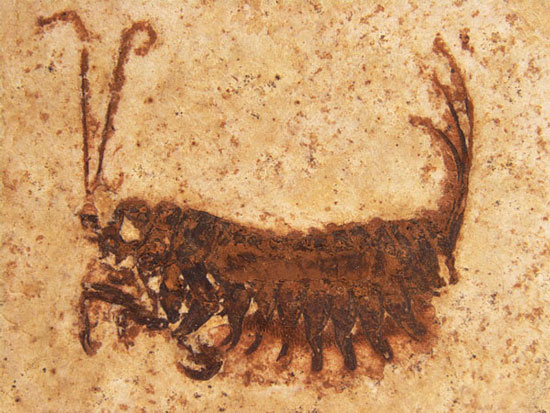Discovering strange ancient insects
Scientists from the German Museum of Stuggart, Germany have discovered a new class of insects, living in South America at the beginning of the White Rabbit era, Global Science Magazine said.
A group of researchers led by Dr. Arnold H. Staniczek and Dr. Günter Bechly - the two leading experts on entomology - confirmed that the specimens of dead insects belong to the double-winged insect class. row with modern phytoplankton.
However, this insect is different from the phytoplankton as well as all other insects known for their anatomy and behavioral behavior. Thanks to the new discovery of adult winged specimens and intact larvae, scientists have reasonably explained the philogenetics of the cones. This coincides with the hypothesis of the relationship between them and the two-winged insects.

New specimens of fossil insects have just been found.
These ancient zooplankton have ribbed wings, chest and wing shapes similar to dragonflies, mantis-like legs, which generally have something like the heterogeneous assembling of many different insects into one . So, their larvae are equally unique, like freshwater shrimp.
How their behavior is still a challenge for scientists. If based on pictures printed on rocks, as well as some of their very specific properties, it can be judged that they live in freshwater environments.
Insects that live on estuaries flow into small seas, the geological period of northeastern Brazil today. The ecosystem here is extremely rich. In geological formations people often encounter fossil insects to the point that local people name them without waiting for scientists.
The new insect is classified into the Ancient Wing ( Palaeoptera ), although this class is also divided into two groups, currently arguing. 21 species have been described with a length of 10 to 32 mm. If based on appearance, they live in small laires, stick out their whiskers and become sacrifices for other insects with long legs in front of their chests.
Interestingly, a mature individual is found in the mouth of a prehistoric fish ( Dastilbe , scientific name), proving that it is caught by this fish for a moment, but this moment - the chemical The jelly - has become permanent.
- Discover 52 million year old fossils of strange creatures
- New insects hatch dead hard in amber 130 million years
- Discovering bones' 2,000-year-old ancient vampire in England
- Gorgeous insects ...
- Strange insects attack sweet potatoes
- The pair of insects love each other for 165 million years
- It feels like a person who is infested with insects: strange disease makes many people miserable
- 'Glimpse' strange monsters exist on Earth
- Top 10 weird insects
- Strange insects know photosynthesis like trees
- Newly discovered insects
- Discovering the largest 139 ancient colors ever in Ha Tinh
 Discovered an ancient centipede fossil 99 million years old
Discovered an ancient centipede fossil 99 million years old Discovered bat-like dinosaurs in China
Discovered bat-like dinosaurs in China Discovered a 200-year-old bronze cannon of the coast
Discovered a 200-year-old bronze cannon of the coast Discover 305 million-year-old spider fossils
Discover 305 million-year-old spider fossils What was Earth like in the age of giant insects?
What was Earth like in the age of giant insects?  Why does nature produce so many blood-sucking insects?
Why does nature produce so many blood-sucking insects?  How insects help find clues to rhino poachers?
How insects help find clues to rhino poachers?  Danger lurks inside the mountains where birds sing and insects chirp
Danger lurks inside the mountains where birds sing and insects chirp  How do insects find pollen?
How do insects find pollen?  Do insects feel pain like humans?
Do insects feel pain like humans? 